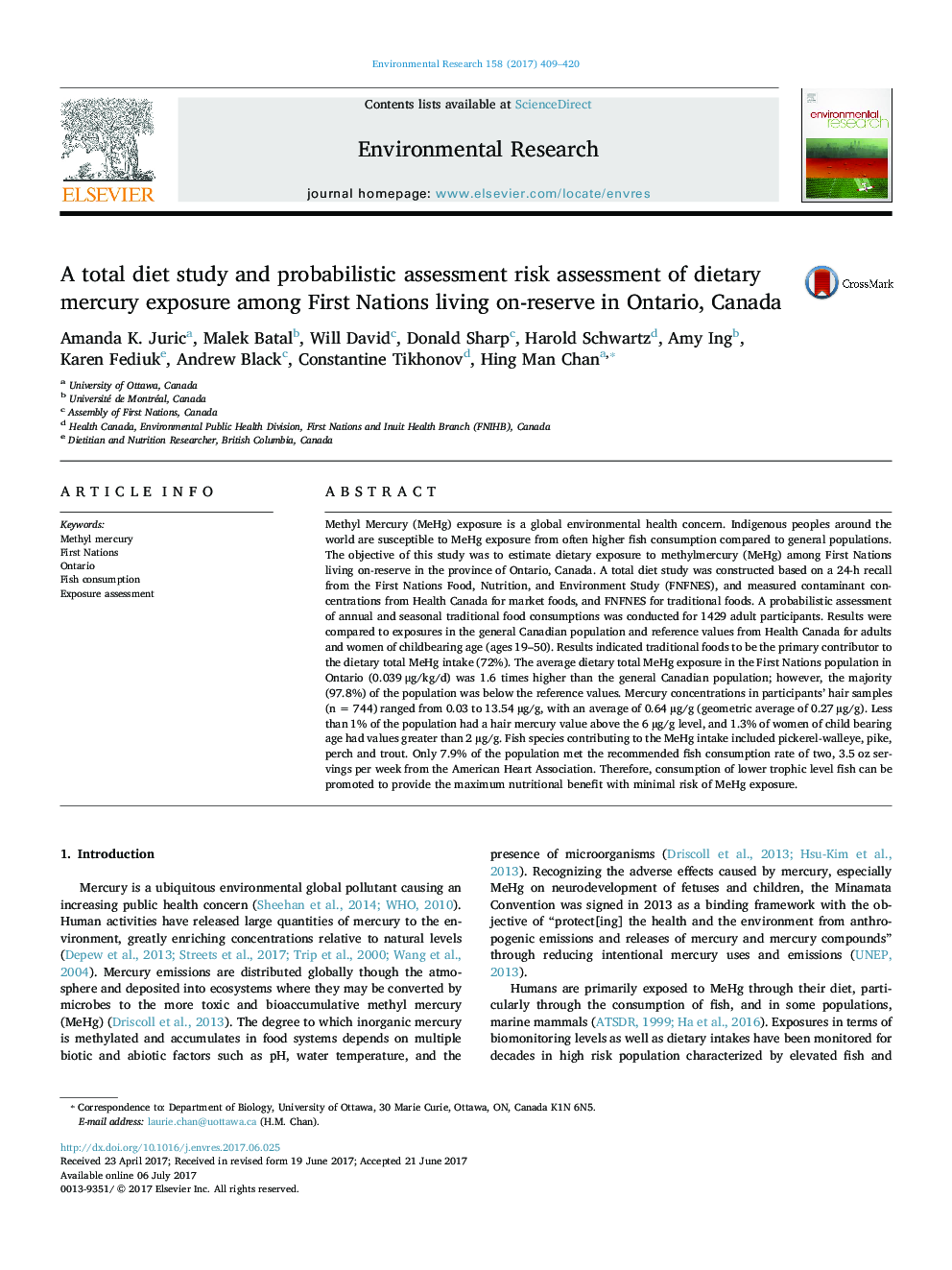| کد مقاله | کد نشریه | سال انتشار | مقاله انگلیسی | نسخه تمام متن |
|---|---|---|---|---|
| 5756340 | 1622545 | 2017 | 12 صفحه PDF | دانلود رایگان |
عنوان انگلیسی مقاله ISI
A total diet study and probabilistic assessment risk assessment of dietary mercury exposure among First Nations living on-reserve in Ontario, Canada
ترجمه فارسی عنوان
بررسی رژیم غذایی کل و ارزیابی احتمال احتمالی ریسک جیوه جیره غذایی در بین اقوام اولتیماتوم در منابع موجود در انتاریو، کانادا
دانلود مقاله + سفارش ترجمه
دانلود مقاله ISI انگلیسی
رایگان برای ایرانیان
کلمات کلیدی
جیوه متیل، ملل اولیه، انتاریو، مصرف ماهی، ارزیابی قرار گرفتن در معرض،
موضوعات مرتبط
علوم زیستی و بیوفناوری
علوم محیط زیست
بهداشت، سم شناسی و جهش زایی
چکیده انگلیسی
Methyl Mercury (MeHg) exposure is a global environmental health concern. Indigenous peoples around the world are susceptible to MeHg exposure from often higher fish consumption compared to general populations. The objective of this study was to estimate dietary exposure to methylmercury (MeHg) among First Nations living on-reserve in the province of Ontario, Canada. A total diet study was constructed based on a 24-h recall from the First Nations Food, Nutrition, and Environment Study (FNFNES), and measured contaminant concentrations from Health Canada for market foods, and FNFNES for traditional foods. A probabilistic assessment of annual and seasonal traditional food consumptions was conducted for 1429 adult participants. Results were compared to exposures in the general Canadian population and reference values from Health Canada for adults and women of childbearing age (ages 19-50). Results indicated traditional foods to be the primary contributor to the dietary total MeHg intake (72%). The average dietary total MeHg exposure in the First Nations population in Ontario (0.039 μg/kg/d) was 1.6 times higher than the general Canadian population; however, the majority (97.8%) of the population was below the reference values. Mercury concentrations in participants' hair samples (n = 744) ranged from 0.03 to 13.54 µg/g, with an average of 0.64 µg/g (geometric average of 0.27 µg/g). Less than 1% of the population had a hair mercury value above the 6 µg/g level, and 1.3% of women of child bearing age had values greater than 2 µg/g. Fish species contributing to the MeHg intake included pickerel-walleye, pike, perch and trout. Only 7.9% of the population met the recommended fish consumption rate of two, 3.5 oz servings per week from the American Heart Association. Therefore, consumption of lower trophic level fish can be promoted to provide the maximum nutritional benefit with minimal risk of MeHg exposure.
ناشر
Database: Elsevier - ScienceDirect (ساینس دایرکت)
Journal: Environmental Research - Volume 158, October 2017, Pages 409-420
Journal: Environmental Research - Volume 158, October 2017, Pages 409-420
نویسندگان
Amanda K. Juric, Malek Batal, Will David, Donald Sharp, Harold Schwartz, Amy Ing, Karen Fediuk, Andrew Black, Constantine Tikhonov, Hing Man Chan,
